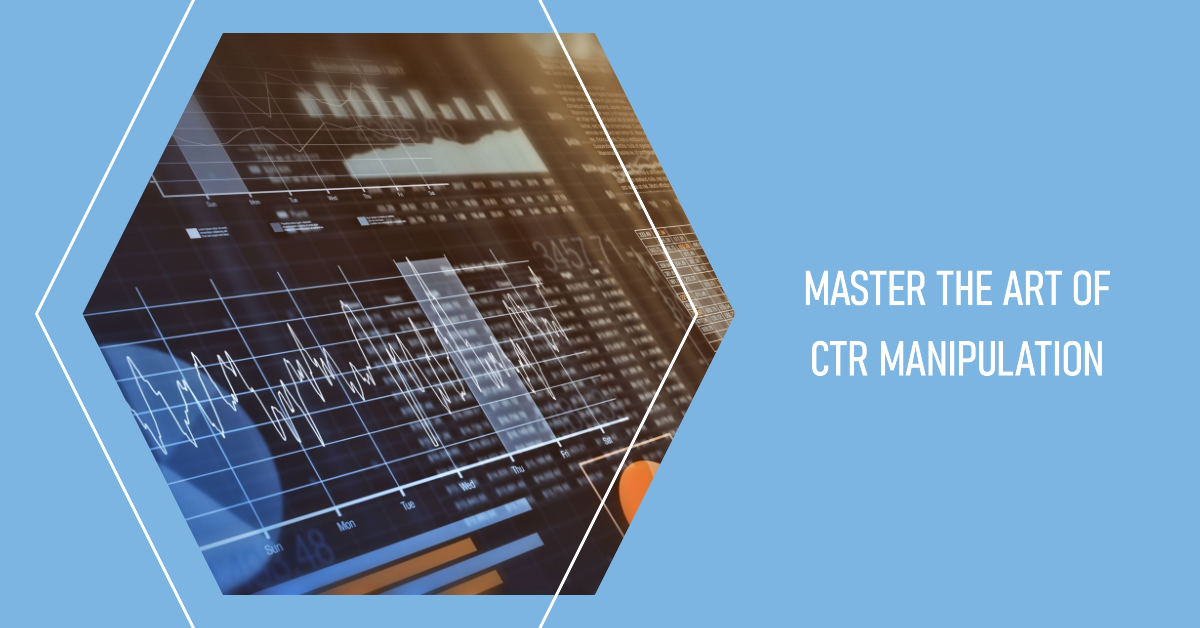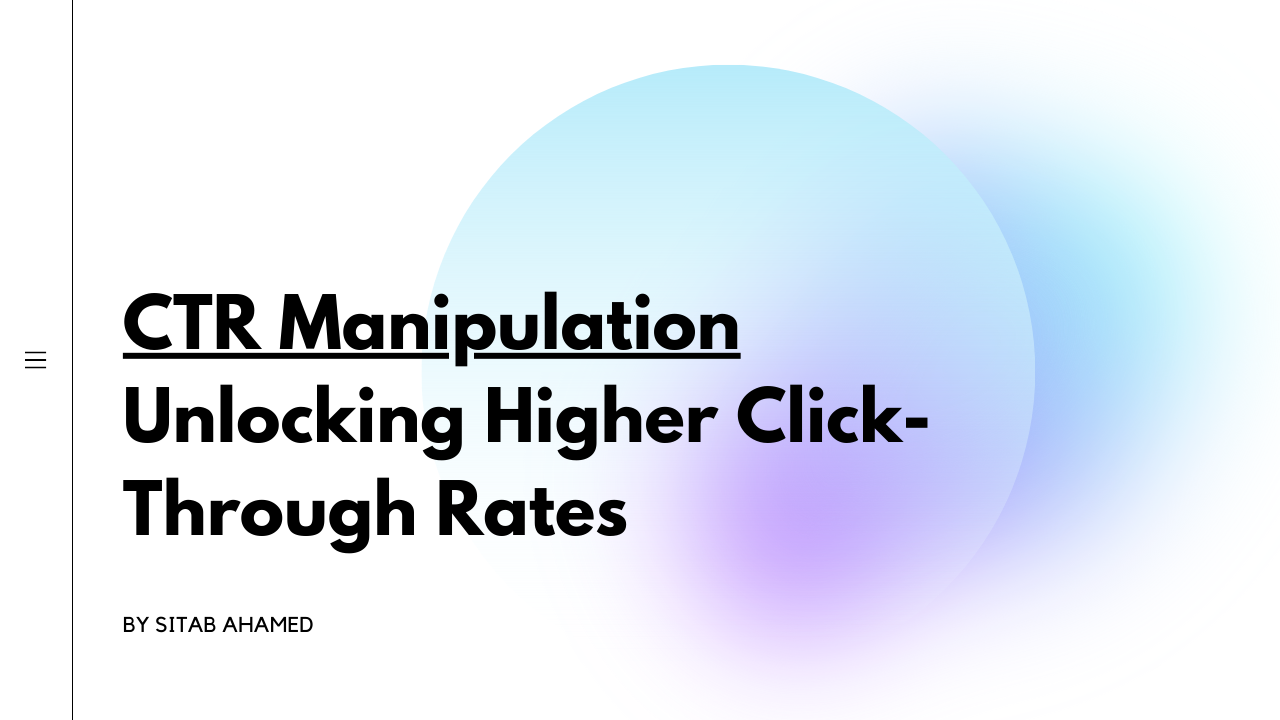CTR Manipulation: A Video Game Changer for Digital Campaigns
The rise of CTR manipulation has actually undoubtedly transformed digital marketing techniques, supplying marketing professionals with tools to enhance involvement and drive web traffic effectively. Methods such as A/B testing and individualized web content have proven to generate significant renovations in click-through rates. Nonetheless, as brand names significantly utilize these approaches, the ethical implications of such practices necessitate analysis. Balancing the quest of enhanced metrics with the demand for authentic audience connections positions a crucial difficulty for marketing professionals today. What effects might this stabilizing act hold for the future of electronic projects?
Recognizing CTR Control
Although click-through price (CTR) adjustment might look like an uncomplicated tactic in digital marketing, it encompasses an array of approaches focused on synthetically inflating interaction metrics. This control can take various types, including making use of click farms, crawlers, or deceptive advertisement placements that mislead consumers right into clicking. These techniques can endanger the integrity of performance information, making it testing for online marketers to determine the real effectiveness of their projects.
Moreover, CTR control elevates ethical worries, as it weakens the openness of digital advertising. The dependence on filled with air metrics can bring about illinformed advertising and marketing choices, skewing source allocation and project strategies. Companies might invest greatly in networks and techniques that show up effective yet do not produce real involvement or conversions.

Benefits of Click-Through Rate Optimization
Optimizing click-through rate (CTR) is vital for enhancing the performance of electronic marketing campaigns. A higher CTR indicates that a bigger proportion of customers are engaging with the web content, which can cause boosted site web traffic and far better conversion rates. By improving CTR, brand names can efficiently allocate their advertising resources to campaigns that produce the highest possible returns.
Among the primary benefits of CTR optimization is the possibility for improved advertisement positioning and lower expenses - CTR Manipulation. Systems like Google Advertisements award greater CTRs with better advertisement positioning and reduced cost-per-click (CPC), permitting online marketers to stretch their budget plans additionally. Additionally, a well-optimized CTR can boost brand visibility, as greater engagement rates often associate with increased organic reach

Methods for Efficient CTR Adjustment
To efficiently adjust click-through prices (CTR), marketers can employ a selection of critical techniques that improve customer involvement and drive traffic. One fundamental method is maximizing advertisement copy to create compelling and imp source action-oriented language. CTR Manipulation. Utilizing strong call-to-action (CTA) phrases encourages customers to take prompt action, raising the probability of clicks
An additional effective technique is A/B testing, which enables online marketers to contrast different advertisement variants. By systematically examining efficiency metrics, they can recognize which elements reverberate best with the target audience, thus fine-tuning their strategies for optimal impact. In addition, leveraging visually appealing graphics and concise messaging can catch interest promptly, making it much more probable that customers will involve.

Finally, maximizing landing pages to guarantee a seamless individual experience can minimize bounce prices and motivate further communication, ultimately fostering greater CTR. By incorporating these strategies, marketing professionals can successfully control CTR to achieve their campaign objectives.
Determining Success in Digital Projects
Determining success More Bonuses in electronic projects needs a clear understanding of key efficiency indications (KPIs) that align with campaign purposes. KPIs offer as measurable metrics that aid analyze the performance of different strategies used throughout the project. Usual KPIs include click-through prices (CTR), conversion rates, price per procurement (CPA), and return on financial investment (ROI)
To effectively determine success, it is critical to establish specific, quantifiable objectives first of the project. If the key purpose is to boost brand name awareness, metrics such as impacts and involvement rates might be prioritized. In contrast, campaigns focused on direct sales would certainly take advantage of a much more comprehensive evaluation of conversion prices and profits created.
Regular analysis of these KPIs makes it possible for marketing experts to make data-driven decisions, enhancing their methods in real-time. Using logical tools can assist in tracking performance and identifying patterns, permitting speedy changes to boost project results. Ultimately, a thorough technique to determining success not only highlights areas for improvement but also strengthens the total effectiveness of digital advertising and marketing efforts, driving sustained development and engagement in the long term.
Future Trends in Digital Advertising
Expecting the future of electronic marketing exposes a landscape shaped by fast technical innovations and altering customer habits. As expert system and machine discovering continue to advance, marketing experts will significantly leverage these technologies to individualize projects at an unprecedented scale. Anticipating analytics will certainly enable brand names to anticipate client needs, optimizing advertisement positionings and material delivery in actual time.
Furthermore, the surge of voice search and smart gadgets is transforming how consumers interact with digital web content. Marketing experts will certainly need to adapt their strategies to guarantee exposure throughout numerous platforms, including voice-activated assistants. This shift requires an emphasis on conversational marketing, highlighting interaction with discussion rather than standard advertising techniques.
Additionally, personal privacy concerns are triggering adjustments in data collection techniques. Openness and honest information use will certainly become extremely important, driving brands to promote count on and loyalty amongst consumers. The ongoing development of social media systems will certainly also influence advertising and marketing approaches, with an enhanced emphasis on credibility and user-generated web content.
Final Thought
In summary, CTR manipulation stands for a image source significant improvement in electronic advertising strategies, providing immediate benefits via boosted involvement metrics. The ongoing evolution of electronic advertising will certainly depend on this fragile interaction, forming the future landscape of brand-consumer interactions.